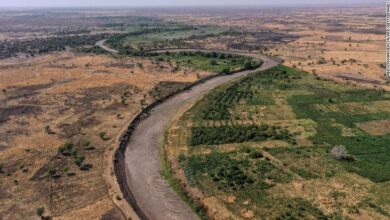The dispute between Egypt and Sudan on the Halayeb area will be resolved soon, Sudanese President Omar al-Bashir said.
Sudanese radio quoted Bashir on Monday as saying that relations between Sudan and Egypt will improve following the 25 January revolution. The president’s statements came during a popular conference in Halayeb, according to the radio.
In May, outgoing Foreign Minister Nabil al-Araby said Halayeb will be “a joint investment area" between Egypt and Sudan.
The Halayeb triangle border area has caused disputes between Egypt and Sudan since the late 19th century, when Britain occupied Egypt and Sudan.
In 1899, the Anglo-Egyptian Condominium Agreement for Sudan set the political boundary between the territories at the 22nd parallel, placing the Halayeb triangle inside Egyptian borders.
In 1902, the British drew a separate "administrative boundary" that placed the Halayeb triangle under Sudanese administration because its inhabitants were closer to Khartoum, Sudan’s capital, than they were to Cairo.
The Halayeb triangle, whose three main towns consist of Halayeb, Abu Ramad and Shalatin, stretches over 21,000 square kilometers.
The area remained under Egyptian-Sudanese joint control until the dispute resurfaced in 1992, when Sudan allowed a Canadian company to explore for oil in the waters off Halayeb. Negotiations began, but the company pulled out of the deal.
In 2004, Bashir claimed that despite his nation's withdrawal from the area in 2000, Halayeb still rightfully belonged to Sudan, and the country submitted a memorandum to the UN in this regard.
Translated from the Arabic Edition



